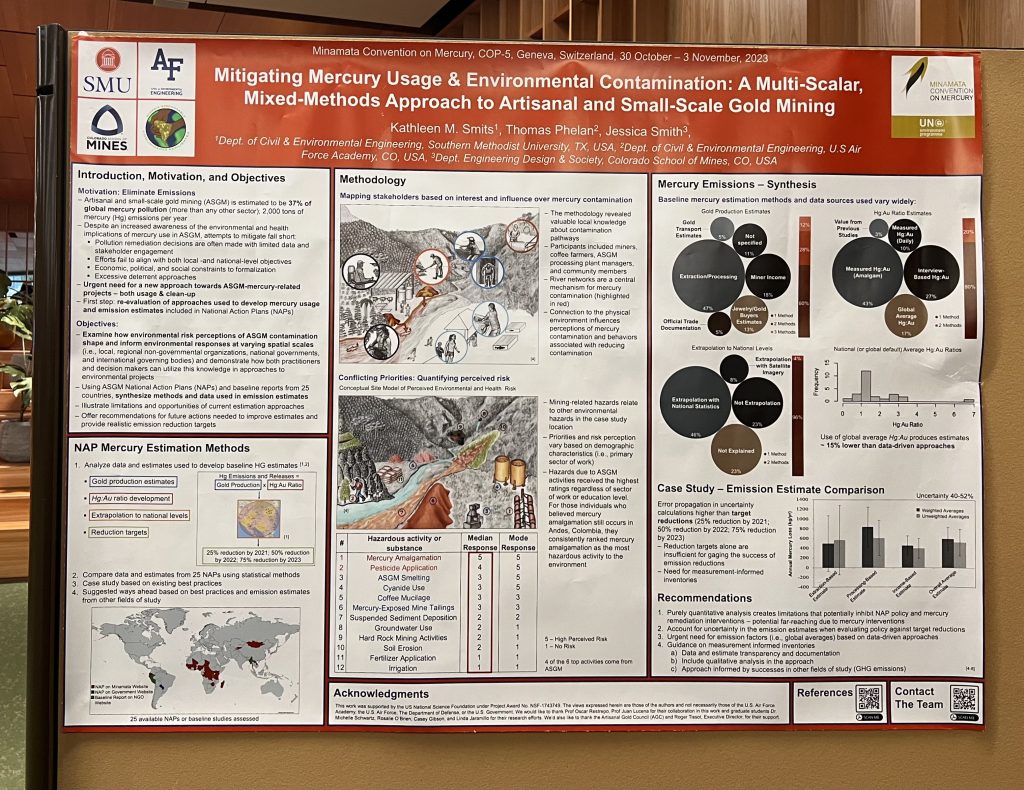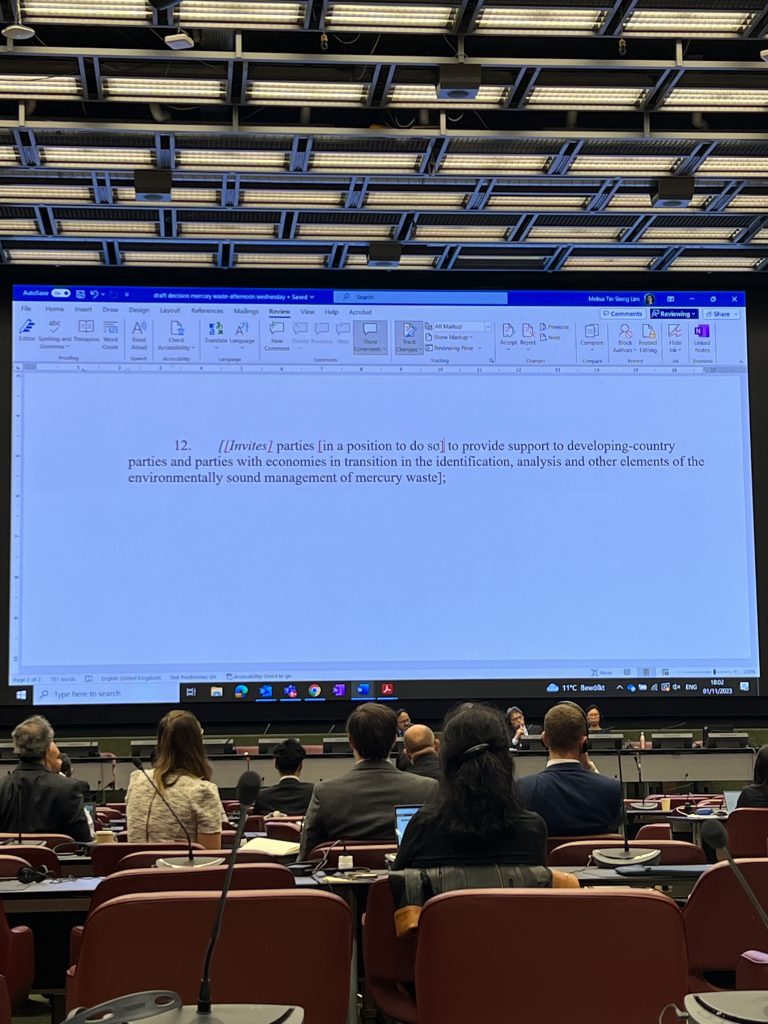By: Brady Hartnett
We began our third day at the conference in the plenary session, with updates from the previous day’s contact and Friend of the President groups. In regard to Annexes A and B, the group had spent time evaluating the feasibility of available technology and economic factors and determined more time was needed to standardize final items related to this topic. There had been some compromise in the Mercury waste threshold discussions from parties, however again more time was requested to continue work. The last contact group to recap their meeting was the group on programme of work and budget, who followed suite of the previous two groups on calling for more time. Two Friends of the President groups also reported back, with the one on reporting successfully agreeing on changes to improve clarity and guidance to proposed amendments, while the group on effectiveness evaluations following suite of the contact groups in needing additional time to come to a point of convergence on the number of members per region being established.
The President then moved on to addressing the agenda for the day. One of the topic was Item 4(e) – Releases. After parties (including Norway, Saudi Arabia, Thailand, Jordan, Iraq, and Burundi) expressed their support for the Amendment to Article 9, a representative of Say No to Mercury discussed her personal experience of Mercury in dental amalgams. This portion was one the most moving parts of the convention I have witnessed so far, as she discussed her experience with having Mercury poisoning twice. She stated that since switching to alternatives to Mercury for her dental work, she has never had a clinical situation where she wishes she could have used Mercury over an alternative. It was expressed how excuses claiming Mercury is cheaper, easier to use, stronger, and safer are not valid defenses to continue its use.
During the lunch session, I was able to attend a knowledge lab by Kathleen Smits discussing “Mitigating Mercury Usage and Environmental Contamination: A Multi-Scale, Mixed-Method Approach to Artisanal and Small-Scale Gold Mining” (ASGM). One of the most shocking statistics from this presentation was that while only 20% of gold is produced from ASGM, approximately 80% of gold miners are involved in ASGM. To combat the environmental, social, and economical effects of Mercury emissions from ASGM, there needs to be an integration between technical and social solutions. The first step of this will include re-evaluating the approaches of estimating Mercury usage and emissions for National Actions Plans (NAPs). With reviewing NAPs from 25 countries, it was determined 60% of them are currently only using one method for their estimation; results also showed that the uncertainties in these estimates can be higher than the target reduction amounts. It was interesting to see the methods used to create estimates for NAPs and the different ways this can be conducted. With the limitations of using only quantitative analysis methods, it is important to integrate multiple technological data collection methods and the use of qualitative analysis to develop new approaches for estimating ASGM Mercury emissions.

The majority of the afternoon I spent attending a contact group on Mercury Waste Thresholds. It was eye-opening to see how small of details matter and how much weight every single word chosen holds. This was shown in a proposal by Chile that regarded capacity building. Saudi Arabia and the United States of America were debating over the inclusion of “in a position to do so”; this also showed the importance of clearly stating your intents with these edits, as multiple of the interventions were just over clarity on what was being edited. In this same session, it was shown how even when a party is moving in a cooperative direction, they may still pause progress due to including conditions about a separate point with their cooperation. This was shown when addressing the first two paragraphs of the article, where when debating on a threshold for the waste, the deletion of an alternative approach in paragraph 2 was brought into question. This stalled progress, and as of the end of the day no threshold had been agreed upon.
